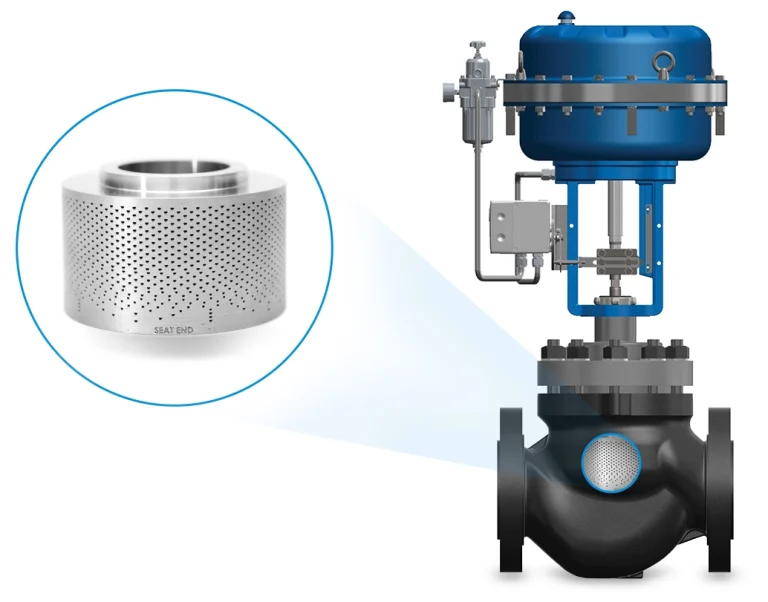
Valve Trim Manufacturing Advances Vital to Reducing Control Cavitation
Controlling pressure drop changes in any process operation is vital to plant efficiency and the longevity of components. One of the biggest challenges of having pressure drop points in a plant is that cavitation can occur, causing unnecessary fluid flashing, downstream disruptions, vibrations, and physical damage to components. Advances in control valve trim manufacturing are set to alleviate cavitation issues that are costing process and industrial plants thousands of pounds’ maintenance, repair and operational (MRO) spend.
Damage caused to components by cavitation can create excessive noise, erosion, and pressure transients. In turn, this can result in valve or piping vibration, and potentially fatigue failure of vital control valves, notes Mike Semens-Flanagan, Global Engineering Director at IMI Critical Engineering.
“Cavitation remains an ongoing, disruptive phenomenon that must be addressed to ensure plants and facilities remain as productive as possible,” Mr. Semens-Flanagan adds, “With external factors such as the current energy crisis continuing to squeeze margins for plant operators throughout the oil and gas, power, and nuclear industries, the downtime cavitation can cause is more costly than ever.
“I’d strongly encourage plant stakeholders to explore different trim technologies which can limit fluid exit velocities and allow for greater control of the pressure drop let-downs that cause cavitation.”

To mitigate cavitation related downtime, IMI Critical Engineering has developed the 840-3D (globe) and 860-3D (angle) control valves. Featuring a customisable 3D-printed trim that uses IMI’s patented DRAG® Technology, fluid is directed through a multi-stage path to reduce differential pressure while also eliminating erosion, vibration, and noise problems.
Both valves are available in sizes 1″ to 16″ and are suitable for use across a broad range of applications, benefitting from top entry design for easy inspection and maintenance. No internal components are screwed or welded into the valve body, further enabling easy and efficient maintenance and parts replacement. A wide range of actuation is also available, including pneumatic, electric, and manual options.
Mr. Semens-Flanagan continues: “As both the 840-3D and 860-3D provide greater control over fluid velocities, one of the chief causes of cavitation is eliminated at source. Even in situations where gas bubbles may form, the fact that either valve can divide the flow into many small channels is instrumental to reducing energy to consistent and safe levels.
“Ultimately, the ability to use 3D printing to manufacture control valve trim components represents a step-change in combatting cavitation. Put simply, this level of durability and customisation is not possible with traditional subtractive manufacturing techniques. While cavitation has long plagued operations teams throughout the oil and gas, power, and nuclear industries, we hope the advent of 3D-printed trim components will finally eliminate one of its chief causes for good.”
For more information on the 840-3D and 860-3D control valves, click here.
Leave a Reply Cancel reply
Categories
- Industrial News (2)
